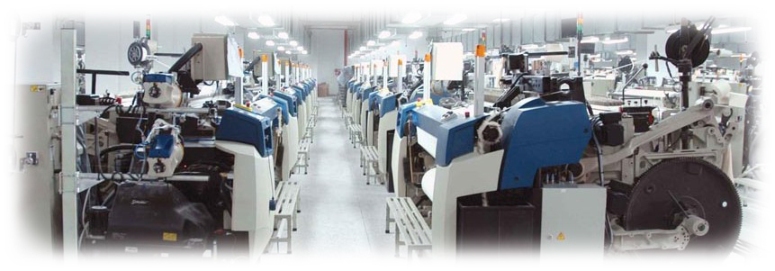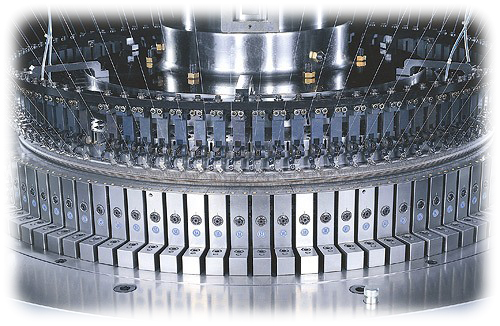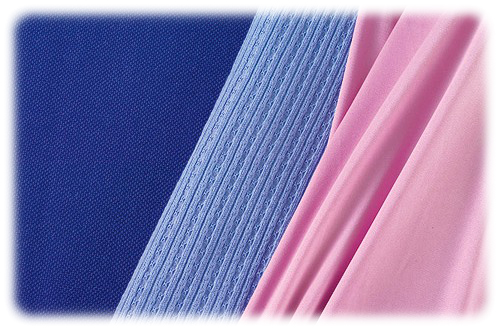|
|

|
We have our fabric manufactured from the best fabric manufacturing units in Pakistan.
Some Information About Weaves:
The basic weaving pattern, in which each thread of the warp is interlaced
with filling thread, or woof, is called the plain, or taffeta, weave. The word taffeta
probably originated from the Persian taftah, meaning "twist." Familiar names for
fabrics in the plain weave are batiste, broadcloth, calico, cambric, crepe, challis,
cheesecloth, chintz, muslin, organdy, percale, seersucker, voile, and tweed.
Variations of the plain weave are the basket and the ribbed weave.
Monk's cloth, oxford shirting, and plaids are examples of the basket weave; poplins,
bengalines, and piques are ribbed weaves.
Twills: A twill weave is easily identified by its
diagonal pattern of parallel ribs. Our supply of twill fabrics encompasses all patterns,
weights and color combinations. We can offer 160 GSM till 500 GSM for this twill
Fabrics.
Drills: A strong twilled cotton fabric used in men’s
and women’s slacks, we offer drills in a variety of widths and weights.
Sateen Fabrics – Sateens are fabrics using a satin
weave using short-staple yarns such as cotton. The principal characteristic of the
satin weave is its smoothness, which is achieved at the cost of strength. The smooth
surface of the satin weave is produced by passing the warp yarns over a number of
filling yarns, keeping the interlacing to a minimum. We can offer very good quality
of Sateen Sheeting Fabrics. In threads we can offer sateen from 180-1000 threads.
Our Sateen contains 120-380 GSM weight. We can also weave sateen for our customer’s
Special requirement.
Dobby & Jacquard Weaves: These two weaves are
used to produce patterned fabrics. Small, repetitive motifs, such as the bird's
eye, a small diamond with a dot at the center, used in shirting and dress fabrics
are dobby weaves.
Intricate patterns are produced on the Jacquard loom, named for its French inventor,
Joseph Marie Jacquard. Jacquard weaves are used extensively for upholstery and drapery
materials, such as brocades, brocatelles, tapestries, and matelassés.
Canvas: This heavy-duty woven fabric, known for its
sturdiness, is made of cotton. It differs from standard cotton fabric in the way
that it is woven. We offer plain and duck canvas in a variety of weights and numbers
and, of course, in a wealth of colors.
Denim: Denim clothing and accessories are a staple
of both young and older consumers alike. We offer an attractive variety of indigo
rope-dyed denim fabrics in a range of styles and colors including poly denims, stretch
denims, basic denims, and specialty varieties.
Stretch: No matter what your need for stretch woven
fabrics, Naklahwear has the product. We offer woven fabrics in stretch including
spandex, lycra and coolmax.
Pile Weaves: Some pile weaves, including velvets,
plushes, corduroys, and Turkish toweling, are produced by a combination of the plain
weave and the use of wires to draw from the cloth additional warp or filling yarn,
forming loops that create the pile. Turkish toweling has uncut loops, in contrast
to velvets in which the loops are cut. Pile fabrics may be produced also by weaving
two pile fabrics face to face and then cutting them apart. This process is more
economical than the cutting of loops, required in the production of velvets. Woven
carpets and rugs are pile fabrics.
|
 |
 |
|
|
|